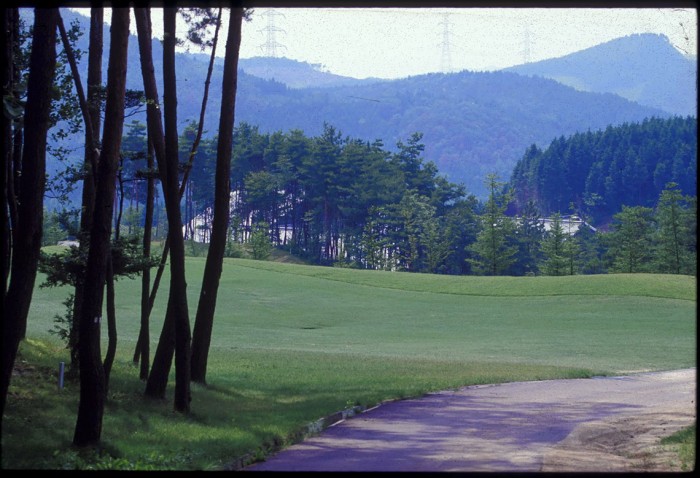
Golf may not be mentioned with sumo wrestling and baseball as a national pastime, but it certainly ranks high on the list for a sports enthusiast in Japan. The number of golf courses, practice ranges, and practice nets in backyards would surprise even the inventors of the game, the Scots. Walk along any commuter train or subway platform and the chance of seeing someone take a practice swing (without the benefit of a club) is quite good. Many people who practice, however, have probably never played a round in Japan: the fees are much too high.
The game of golf was introduced to Japan by an Englishman and in 1901 the first golf course was established in the hills behind the port city of Kobe, one of the first cities opened to foreign residence in the 19th century and still one of the most international of Japanese cities. These days, there were 1714 courses in 1990, projected to increase to 3000 in the year 2000. Advertisements on commuter trains in Tokyo boast of clubs which can offer up to 108 holes of golf on three different courses stretching away from the club house. If all plans for new or expanded golf courses in Chiba prefecture (next to Tokyo) are completed, then 11% of its land will be golf course by 2000. In 1988, an estimated 10 million golfers played 76 million rounds.
Because of the cost, golf is a game for the white collar worker. It has become a standby for company executives who meet their counter-parts from other companies to combine a round of golf with some informal business discussions. The golf course provides a forum for negotiations removed from the presence of junior colleagues and the formality of the corporate boardroom. It is commonly held that a businessman who cannot manage a round of golf is a businessman at a disadvantage. Being a business activity, golf does not necessarily require an excessive amount of exercise; moving walkways may be provided to help the golfers up to the next tee.
Like the Nakasendo Golf Club which straddles the Nakasendo, many golf courses are located a substantial distance away from the major cities in rural settings of great beauty. The Nakasendo Golf Club commands views which are breath-taking when the weather is good. One of the problems, however, is that the clearing of forests and application of fertilizers on the fairways and greens alter the ecological balance in the neighborhood. For example, each golf course applies an average of 2.7 tons of pesticide every year, about 8 times more than is usually used on every hectare of rice fields. This causes worries about detrimental environmental impact. Despite this, courses continue to be built, carving out great chunks of natural or agricultural land. New or existing clubs, however, are seldom opposed by local residents because they provide employment for local people. In an age when depopulation of rural areas is a serious problem, an easy job (compared to rice farming) at the golf club is frequently enough to keep some of the young generation at home rather than move to the city for work.


